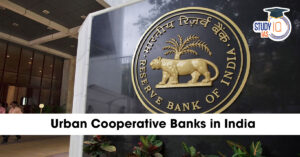Table of Contents
India-Bhutan relations represent one of the most stable, peaceful, and mutually respectful bilateral partnerships in Asia. Rooted in shared spiritual heritage, cultural linkages, people-to-people contact, and decades of developmental cooperation, the relationship continues to evolve in new strategic and economic directions. The Indian Prime Minister’s two-day state visit to Bhutan in November 2025, coinciding with the 70th birthday of the Fourth King Jigme Singye Wangchuck (K4), further strengthened this unique friendship.
This article covers the latest developments, historical context, hydropower partnership, defence cooperation, and the future roadmap, making it valuable for UPSC and general readers.
Latest Developments in India-Bhutan Relations (2025)
The Indian PM’s visit served as a major diplomatic milestone as he attended the Fourth King’s 70th birthday celebrations, acknowledging his role in shaping modern India-Bhutan relations.
Key Highlights
-
Inauguration of the 1,020 MW Punatsangchhu-II Hydroelectric Project, a major symbol of bilateral energy cooperation.
-
Announcement of a ₹4,000 crore concessional credit line for future energy and infrastructure projects.
-
Reaffirmation of India’s ₹10,000 crore assistance under Bhutan’s 12th Five-Year Plan, supporting infrastructure, agriculture, healthcare, and finance.
-
Signing of three new MoUs in renewable energy, healthcare, and mental health.
-
Push for rail connectivity, linking Bhutan’s Gelephu and Samtse with India’s railway network to boost trade and mobility.
-
Strengthening border infrastructure and exploring inland waterways to enhance regional connectivity.
-
Participation in the Global Peace Prayer Festival, underscoring shared spiritual values and Buddhist heritage.
These developments align with India’s Neighbourhood First Policy and Bhutan’s objective of sustainable, inclusive development.
Historical Depth of India-Bhutan Relations
India and Bhutan share centuries-old civilizational and cultural ties, formalised through the 1949 Treaty of Friendship and strengthened further through the 2007 Treaty, which emphasises sovereign equality.
Role of the Fourth King (K4)
The Fourth King, Jigme Singye Wangchuck, played a defining role in modernising Bhutan’s relationship with India:
-
Continued his father’s policy of maintaining close ties with India after becoming king in 1972 at age 16.
-
Integrated Bhutan’s economy with India by pegging the Ngultrum to the Indian Rupee (1:1) in 1974.
-
Expanded Bhutan’s international presence by joining the UN (1971) and co-founding SAARC (1985) while maintaining strategic coordination with India.
-
Initiated Bhutan-China border talks (1984) with full transparency toward India.
-
Oversaw developmental planning with Indian support, strengthening Bhutan’s Five-Year Plans.
-
Played a central role in launching hydropower cooperation, which now forms the economic backbone of bilateral ties.
-
In 2003, led Operation All Clear, eliminating insurgent camps from Bhutan with Indian support, marking a high point in defence cooperation.
His legacy remains deeply influential in India-Bhutan diplomacy.
Hydropower Partnership – The Core Economic Link
Hydropower is the main pillar of India-Bhutan economic partnership and a major contributor to Bhutan’s economy.
Major Projects Built with Indian Assistance
-
Chukha (336 MW)
-
Kurichhu (60 MW)
-
Tala (1,020 MW)
-
Punatsangchhu-II (1,020 MW, inaugurated 2025)
Built largely under a grant-loan model, these projects allow Bhutan to export surplus electricity to India, contributing significantly to Bhutan’s revenue while supporting India’s clean energy needs.
Security Cooperation
Security coordination remains a strong pillar of bilateral relations:
-
Joint efforts to secure the Himalayan region.
-
Operation All Clear (2003) eliminating militant camps on Bhutanese soil.
-
Strategic coordination on the Doklam region, ensuring regional stability.
-
Regular cooperation between the Royal Bhutan Army and Indian Army for training, border management, and surveillance.
Cultural and Spiritual Connections
India and Bhutan share deep-rooted spiritual ties through Buddhism. The Indian PM offered prayers at Tashichhodzong Monastery to the sacred Piprahwa relics of Lord Buddha, reinforcing the profound cultural connection. Shared festivals, monasteries, educational exchanges, and pilgrimages further strengthen people-to-people bonds.
Future Roadmap to Strengthen India-Bhutan Relations
1. Enhanced Connectivity
-
Fast-track rail links (Gelephu–Samtse)
-
Modernise border trade points
-
Explore inland water transport routes
2. Energy Diversification
-
Move beyond hydropower to solar, wind, and green hydrogen projects.
-
Strengthen power purchasing agreements.
3. Digital Integration
-
Expansion of UPI in Bhutan
-
Strengthening of Digital Public Infrastructure (DPI)
-
Skill development in innovation and fintech
4. Security Coordination
-
Continued collaboration on counter-insurgency
-
Joint responses to transborder threats
5. Cultural Diplomacy
-
Buddhist tourism circuits
-
Collaboration in education, heritage conservation, and youth exchanges
Conclusion
India-Bhutan relations continue to stand as a model of trust, mutual respect, and shared prosperity in South Asia. The Indian PM’s 2025 visit reaffirmed the countries’ unbreakable bond while opening new frontiers in energy, connectivity, technology, and cultural cooperation. With enduring friendship and collaborative vision, India and Bhutan remain vital partners committed to regional peace, sustainable development, and a harmonious future.


 Transplantation of Human Organs and Tiss...
Transplantation of Human Organs and Tiss...
 Dumpsite Remediation Accelerator Program...
Dumpsite Remediation Accelerator Program...
 Urban Cooperative Banks (UCBs) in India:...
Urban Cooperative Banks (UCBs) in India:...

























